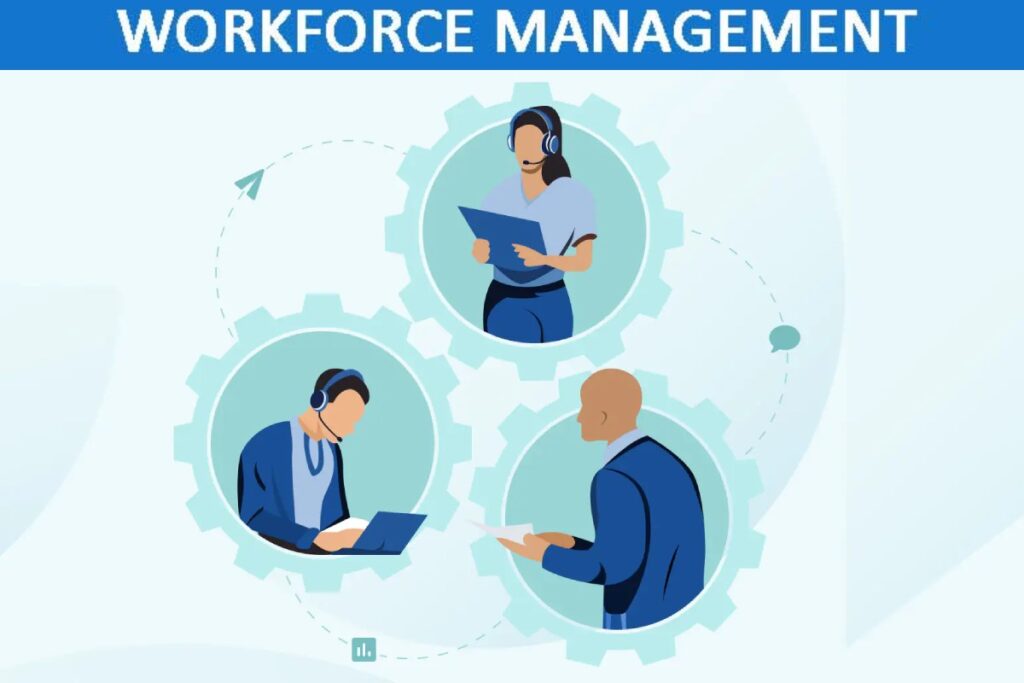The effectiveness of a call center is greatly dependent on its workforce management practices, which encompass various aspects such as scheduling, forecasting, and performance tracking. A well-optimized workforce management strategy ensures that the correct number of skilled agents are available at the right times, improving customer satisfaction, increasing productivity, and enhancing operational efficiency.
Call centers can maximize their performance and deliver exceptional customer service by effectively managing the workforce. This workforce management call center encompasses various components, but four key elements take the spotlight: Forecasting, Employee Scheduling, Agent Assignments, and Intraday Management.
These essential elements work together perfectly to ensure smooth operations, elevate customer satisfaction, and maximize productivity. By seamlessly integrating each component, businesses can streamline processes, deliver exceptional service, and achieve optimal efficiency. This cohesive collaboration creates a solid foundation for success, allowing organizations to thrive in today’s competitive landscape.
1- Forecasting
The first significant element of workforce management call center is forecasting. It predicts the number and types of calls the call center will receive within a certain period. This involves analysis of historical data, trends, and other influencing factors such as marketing campaigns, seasonality, or even the current news cycle.
By accurately forecasting the call volume, call centers can prepare for the anticipated workload, ensuring they have enough staff to handle the calls efficiently. This helps prevent overstaffing or understaffing, which can negatively affect the company’s bottom line and customer service quality.
2- Employee Scheduling
Once the forecast is in place, the next step is employee scheduling. This involves creating a schedule that aligns the workforce with the expected call volume. The goal is to ensure enough agents can handle calls at any given time while considering breaks, training sessions, meetings, and other non-call activities.
Effective scheduling is a balancing act. It requires considering the agents’ skills, preferences, and availability while also meeting the operational needs of the call center. It’s a complex task, but the right tools and strategies can significantly improve the call center’s performance.
3- Assigning Agents
Assigning agents is another critical component of workforce management call centers. This involves matching the suitable agents with the right tasks based on their skills, experience, and performance levels. For instance, an agent who excels in handling technical issues may be assigned to handle calls related to tech support, while an agent with excellent sales skills might be tasked with upselling or cross-selling.
By assigning agents based on their strengths, call centers can improve the quality of service, enhance customer satisfaction, and increase their chances of achieving their key performance indicators (KPIs).
4- Intraday Management
The final central element of call center workforce management is intraday management. This involves monitoring and managing the call center’s operations in real-time. It’s about making necessary adjustments to the schedule and tasks as unexpected situations arise, such as sudden spikes in call volume or unforeseen absences.
Intraday management ensures that the call center can swiftly adapt to changing circumstances, maintain service levels, and minimize disruptions. This requires a proactive approach, real-time visibility into the operations, and effective communication among the team.
4 Major Elements of Call Center Workforce Management – In Summary
Effective workforce management call center involves a combination of accurate forecasting, strategic scheduling, skill-based agent assignment, and proactive intraday management. By mastering these four elements, call centers can significantly enhance their efficiency, customer service quality, and overall performance.


